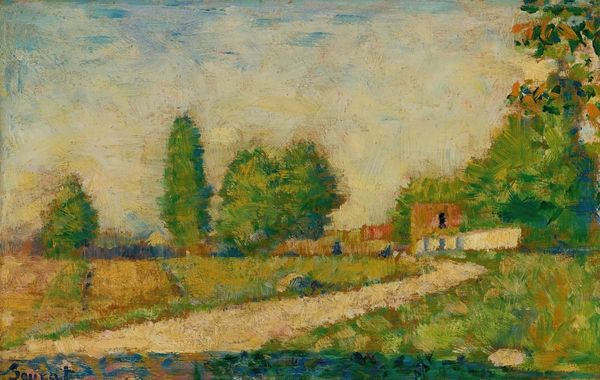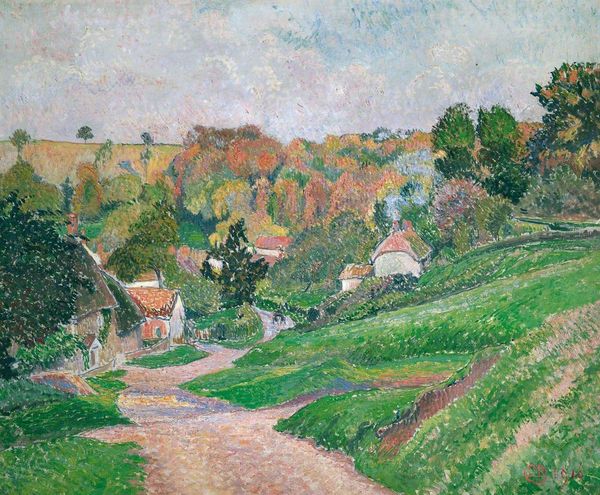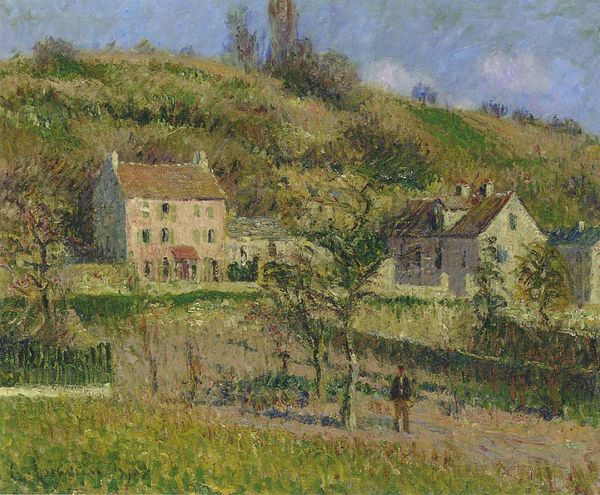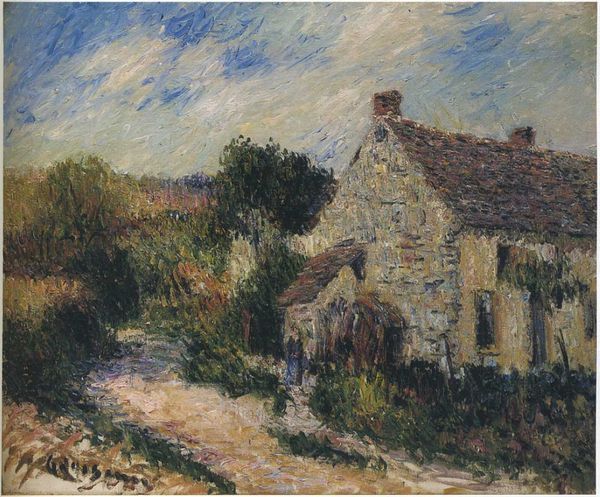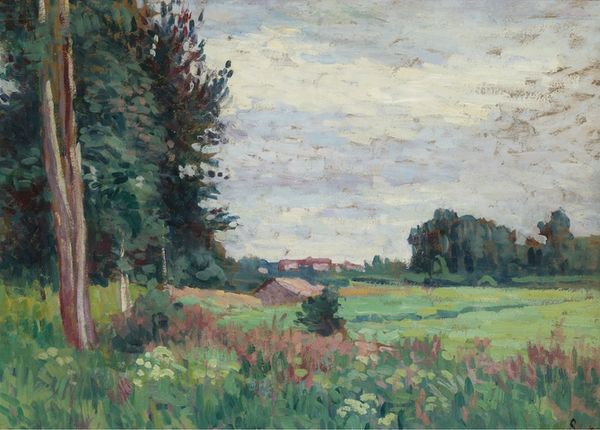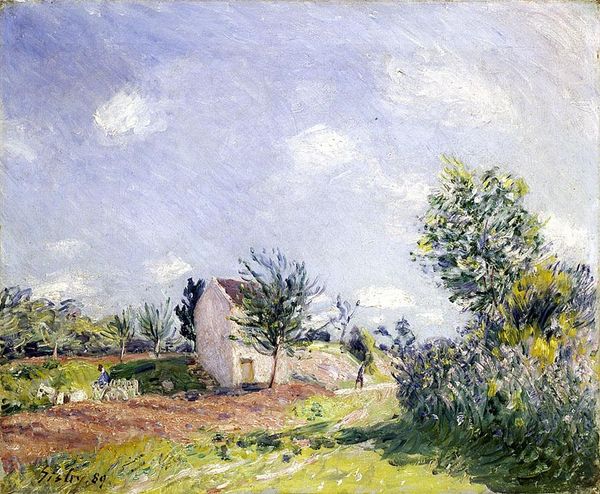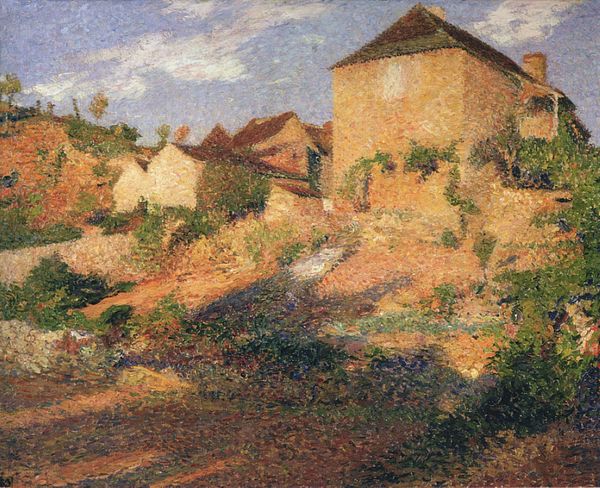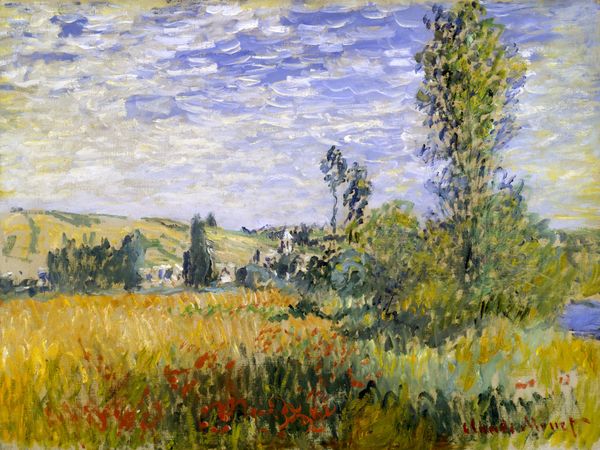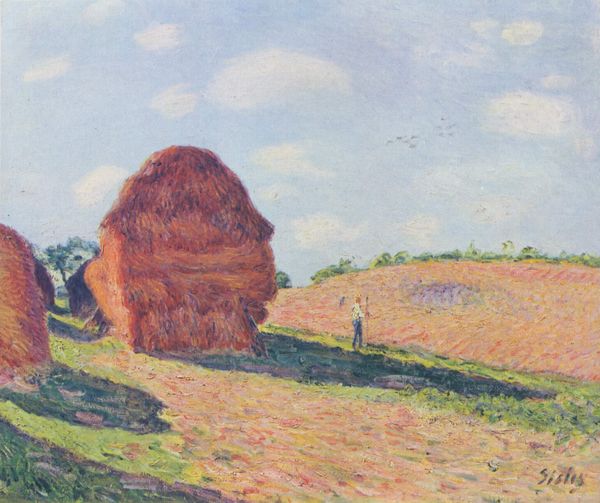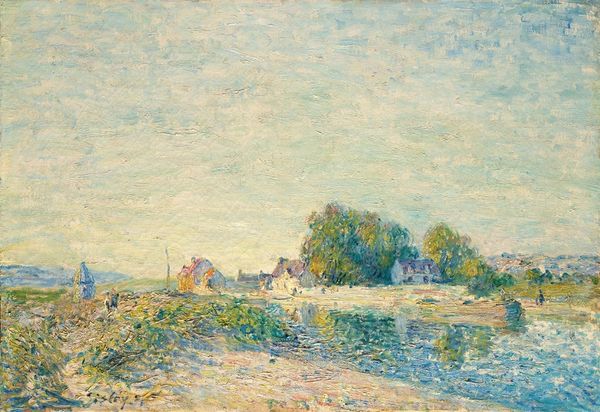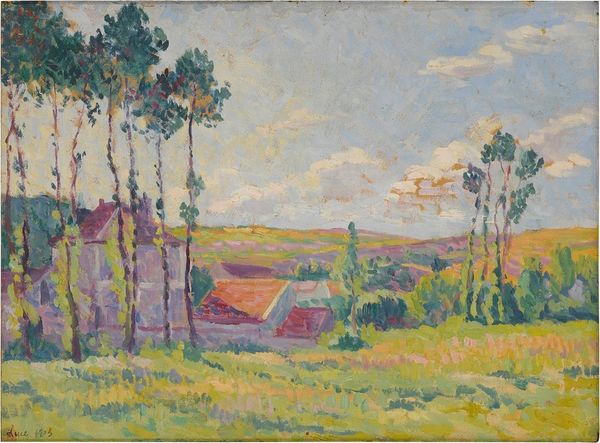
painting, plein-air, oil-paint
#
painting
#
impressionism
#
plein-air
#
oil-paint
#
landscape
#
oil painting
#
genre-painting
Copyright: Public domain
Editor: So here we have "Paysage Aux Meules De Foins," a landscape with haystacks by Léo Gausson, painted with oil. I'm immediately drawn to the way the light plays across the scene, broken up into all these tiny dabs of color. What stands out to you when you look at it? Curator: For me, it speaks volumes about the evolving relationship between art and society in late 19th century France. The rise of Impressionism coincides with significant socio-political shifts. We see the Salon system, the official art exhibitions, being challenged as artists like Gausson move towards "plein-air" painting. This democratization of art, taking it outside of academic studios and into the fields, mirrors the growing influence of the working class. Do you see how these haystacks and fields are now deemed worthy of artistic representation? Editor: Absolutely, I guess I hadn't explicitly connected the choice of subject matter with social changes. I was so focused on the technique. Curator: And that technique is equally crucial. Gausson’s use of visible brushstrokes breaks away from traditional academic painting, making the artistic process itself visible. But who was Gausson's intended audience, do you think, for work such as this? Editor: Maybe an emerging middle class, who appreciate modern art, and a naturalistic depiction of the landscape, rather than strictly historical scenes? Curator: Precisely. This also touches upon the complex dynamics within the art world itself. Private galleries, independent exhibitions, and the rise of art critics began to play significant roles in shaping artistic taste. This move from formal studio settings, and historical scenes, seems like a big political statement. Editor: That's a helpful context, connecting brushstrokes with larger societal changes. I didn't initially consider the socio-political context embedded in such a seemingly simple landscape. Curator: And that's the beauty of art history – revealing those hidden layers and considering the wider cultural implications. Editor: I'll definitely think about the social influences more intentionally moving forward. Thanks!
Comments
No comments
Be the first to comment and join the conversation on the ultimate creative platform.
